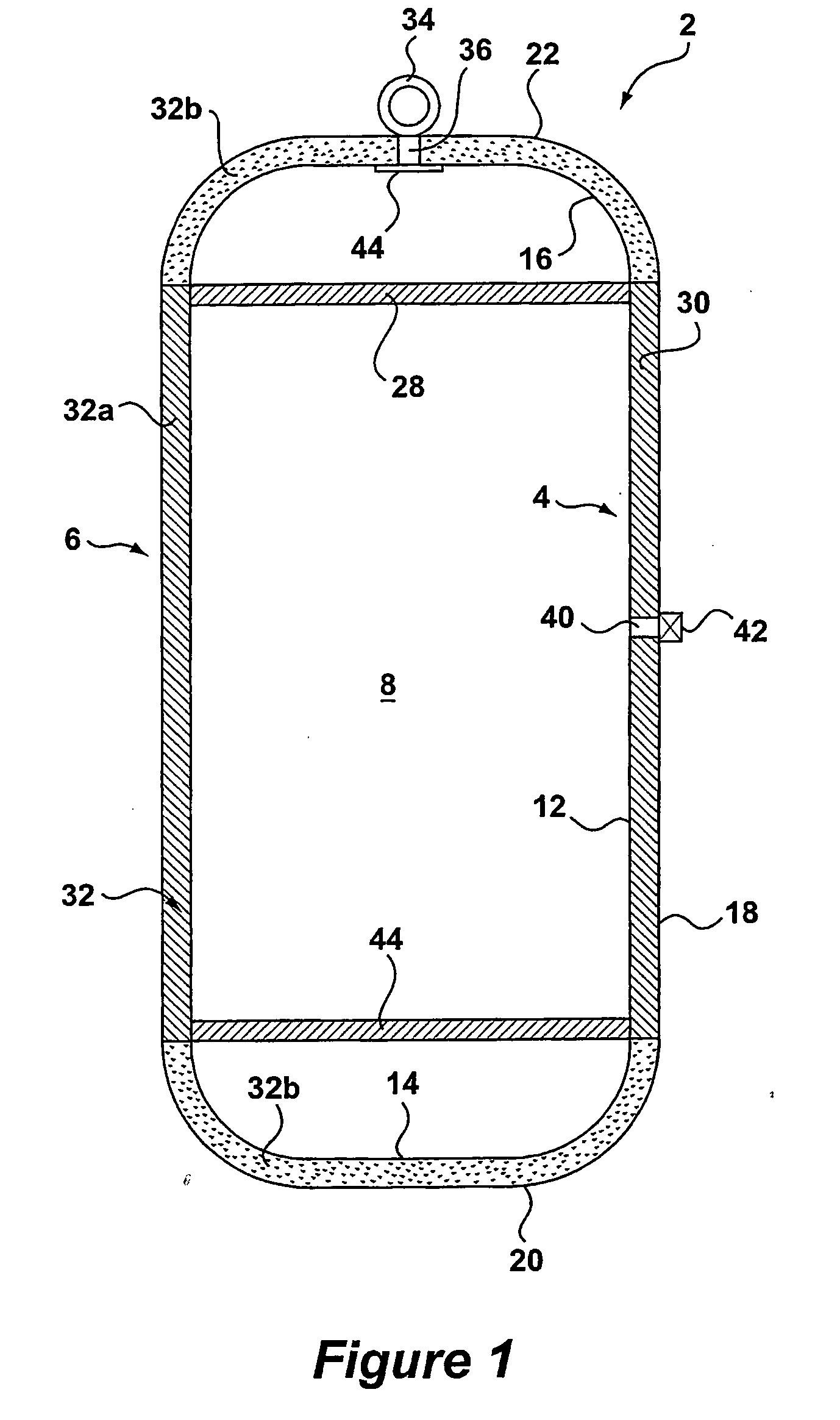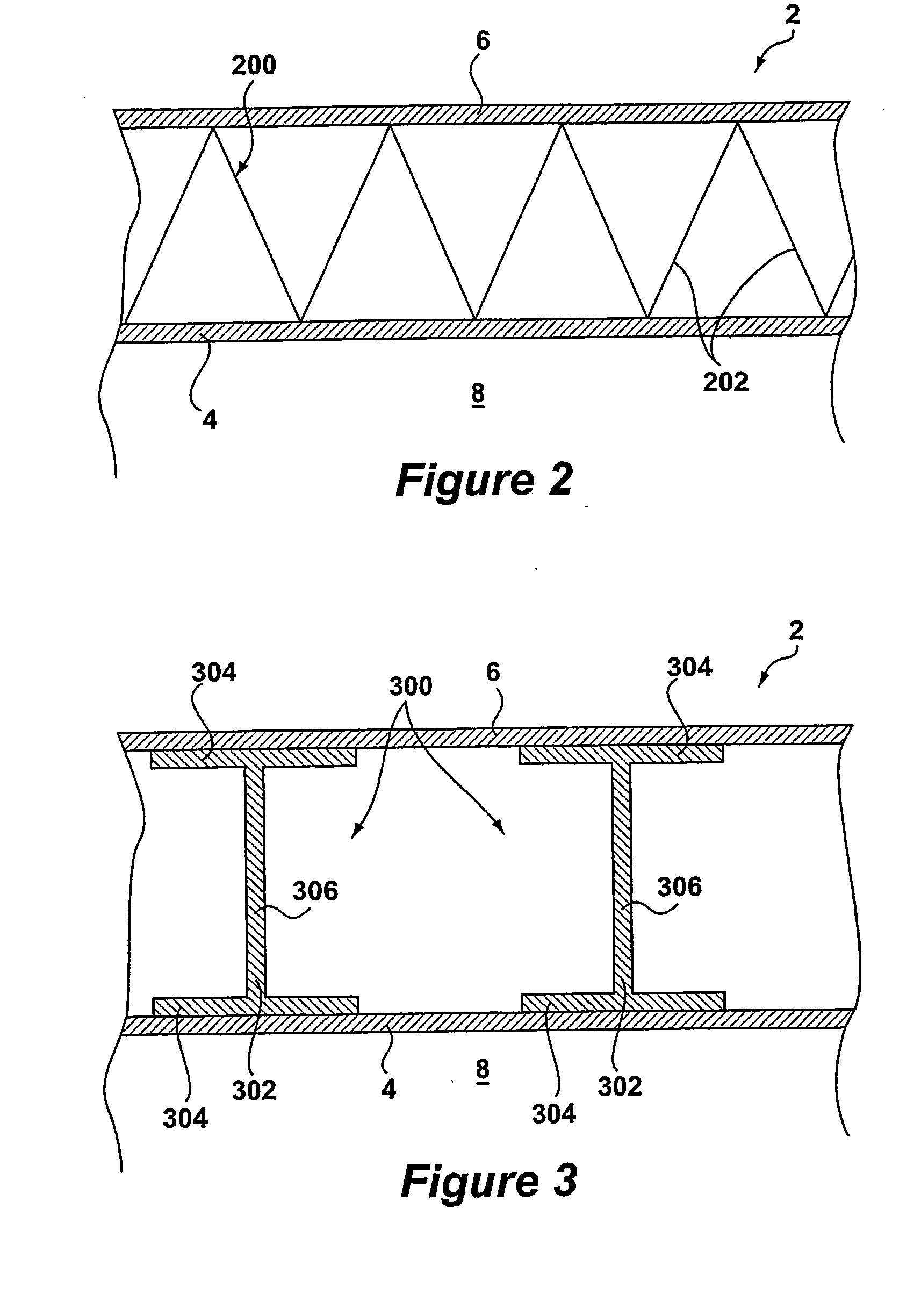Underwater enclosure apparatus and method for constructing the same
a technology of enclosure and enclosure device, which is applied in the field of enclosure apparatus, can solve the problems of high buoyancy, lack of inherent strength and robustness, and the inability to meet the requirements of underwater conditions, and achieve the effect of reducing the curing temperature of resin
- Summary
- Abstract
- Description
- Claims
- Application Information
AI Technical Summary
Benefits of technology
Problems solved by technology
Method used
Image
Examples
examples
[0181] A series of buoyancy modules were prepared with structures and according to the procedures as described above.
[0182] The modules were assembled with both inner and outer shells prepared from carbon fibres (T700, ex Toray) and epoxy resin (Bakerlite L20). The modules of Examples 1 to 3 were prepared using the carbon fibres and epoxy resin in the form of pre-impregnated fibres in strips (pre-pregs). The remaining modules were prepared using fibres impregnated with resin at the time of fabricating the shells.
[0183] The modules were prepared having a nominal length of 800 mm. The modules were substantially cylindrical and had flat ends on both the inner and outer housings. The modules of Examples 1 to 4 and 6 to 9 were prepared using a one unit mandrel (nominal length 1000 mm), with one inner shell being formed per run on the mandrel. Example 5 was prepared using a two unit mandrel (nominal length 2000 mm), from which two inner shells could be cut. Generally, a greater similari...
PUM
| Property | Measurement | Unit |
|---|---|---|
| Fraction | aaaaa | aaaaa |
| Fraction | aaaaa | aaaaa |
| Angle | aaaaa | aaaaa |
Abstract
Description
Claims
Application Information
 Login to View More
Login to View More - R&D
- Intellectual Property
- Life Sciences
- Materials
- Tech Scout
- Unparalleled Data Quality
- Higher Quality Content
- 60% Fewer Hallucinations
Browse by: Latest US Patents, China's latest patents, Technical Efficacy Thesaurus, Application Domain, Technology Topic, Popular Technical Reports.
© 2025 PatSnap. All rights reserved.Legal|Privacy policy|Modern Slavery Act Transparency Statement|Sitemap|About US| Contact US: help@patsnap.com



